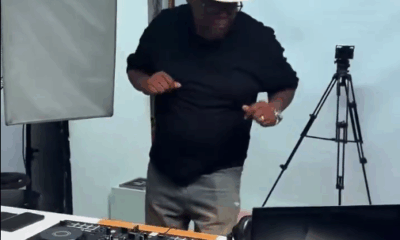News
Inside South Africa’s Prisons: The Battle Against Drugs Mounts

South Africa’s prisons are still fighting a relentless battle: keeping drugs out of correctional centres. Despite tightened security, contraband continues to slip through the cracks, undermining rehabilitation efforts and adding to the challenges faced by the Department of Correctional Services (DCS).
An Uneasy Shadow Over Correctional Centres
The DCS’s latest 2024/25 financial year report shows stark figures that reveal both wins and ongoing struggles. In Gauteng, marijuana confiscations dropped dramatically, from 5,790 kg in the previous year to just 282 kg this year. Yet crystal methamphetamine (tik) seizures ticked slightly upward to about 4 kg.
Elsewhere, the problem remains deeply entrenched. KwaZulu-Natal’s Durban Maximum prison saw almost 5 tons of marijuana seized, with Ncome Medium recording over 1 ton. In Mpumalanga and the North West, facilities such as Barberton, Klerksdorp, and Rustenburg reported between 5,000 kg and 7,000 kg each.
In the Eastern Cape, East London Correctional Centre led the pack with a staggering 20,805 kg confiscated, while Kirkwood recorded almost 10,000 kg. These numbers underscore how widespread prison drug trafficking is, far beyond the country’s largest cities.
More Than Just Marijuana
Marijuana is far from the only substance causing headaches for prison authorities. Mandrax and nyaope, both notorious in South Africa’s street drug trade, still show up in varying quantities. Gauteng facilities alone reported between 250 g and 400 g per site.
In the Western Cape, Goodwood Prison seized 22 kg of mandrax. Other unusual finds made headlines too: a brick of crystal meth at Upington Correctional Centre and batches of homemade beer at Virginia.
Critics Sound the Alarm
Political parties have questioned the DCS’s control over the problem. The Democratic Alliance highlighted frequent mandrax busts in Western Cape prisons, claiming drug use remains rife despite official numbers. ActionSA accused authorities of failing to curb open drug dealing behind bars and pointed to the absence of mandatory inmate drug testing on arrival.
The Department of Correctional Services insists it is stepping up: more surprise cell searches, better intelligence gathering, and measures to outsmart increasingly sophisticated smuggling methods. But challenges remain, especially with drugs often entering through inmates returning from court or hospital or with the help of corrupt officials and contractors.
A Social Issue as Much as a Security Concern
Drug trafficking in prisons is not just a correctional services challenge. It impacts families torn apart by addiction, communities plagued by crime linked to prison networks, and taxpayers footing the bill for incarceration.
Social media reactions have been sharp, with many South Africans calling for greater transparency and stronger anti-smuggling measures. Others stress the need for rehabilitation-focused programmes to address addiction’s root causes, rather than relying on enforcement alone.
Moving Forward
While the DCS’s success in intercepting large quantities of drugs is notable, it’s only part of the battle. Corruption, smuggling ingenuity, and systemic issues within the prison system demand a comprehensive approach.
That means combining tough enforcement with rehabilitation programmes, community engagement, and sustained public accountability. This isn’t just a matter of prison security; it’s a reflection of South Africa’s broader social and economic challenges.
Also read: Ex-policeman Gets 36 Years for Colleague’s Murder in Limpopo
Follow Joburg ETC on Facebook, Twitter, TikTok and Instagram
For more News in Johannesburg, visit joburgetc.com
Source: The Citizen
Featured Image: YouTube/Kaivalay



























